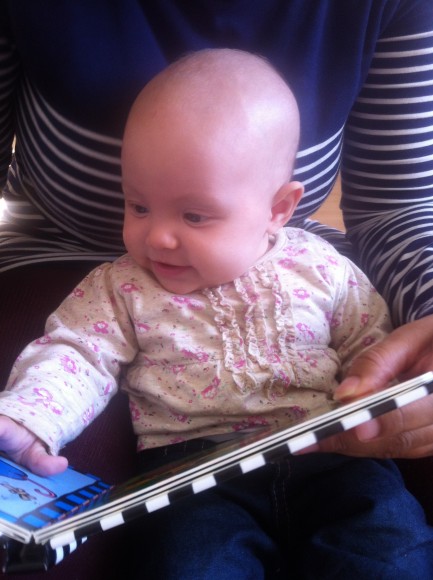Over the past couple of weeks, two big changes have happened in my life. First, one of my sisters has moved to Glasgow from London with her little baby girl. So I’ve become a very busy auntie! Second, I’ve got a new job in DFID. I’ll be supporting our Secretary of State to co-chair a new institution that over 160 countries and over 45 other stakeholders decided to set up, just under a year ago. It’s called the “Global Partnership for Effective Development Cooperation”.
You’d think these two life changes aren’t related, but the other evening, after a hard day in my new job, I read the fairy-tale “Goldilocks and the Three Bears” to my little niece. It got me thinking about why these 200-plus countries and stakeholders decided to set up the Global Partnership in the first place.
For the uninitiated, “Goldilocks” is a story of a girl who goes wandering into the woods, and comes across an empty house, belonging to three bears. She then finds three bowls of porridge, three chairs and three beds, and tries them all out. Successively, she finds her first try of the porridge, chair and bed too hot, too big or too hard, and her second try too cold, too small and too soft. But the third porridge, chair and bed are all “just right”.

Just like Goldilocks, a year ago, countries were on the search for the “just right” number of people to make a difference to development. They were looking for the right sized “we” (NB: the “Power of We” is the theme of today’s Blog Action Day).
A lot of people thought the first try had been “too big”. Since the 1960s, representatives of just under 30 aid agencies such as DFID had been getting together to discuss how to increase and improve the aid they give to developing countries, so as to reduce poverty as much as possible. Most of the time, these representatives had come together in a forum called the Development Assistance Committee (DAC) housed in the Organisation for Economic Cooperation and Development (OECD). The DAC has been an influential part of the OECD. In 2003, it organised a huge meeting of Ministers from all over the world and other stakeholders such as Multilateral Development Banks and Civil Society Organisations in Rome, then another in 2005 in Paris and finally another in Accra in 2008, all with the aim of making aid more “effective” in delivering development and poverty reduction.
These meetings achieved important progress. For example, Ministers agreed that aid agencies should coordinate their aid better and provide more transparent data about where and what it is spent on. But when the donor agencies got together to follow this up, meetings became very technical and technocratic. Attendees had long, in-depth discussions about aid statistics and the difficulties of interpreting them. They split off into different groups to discuss specific issues around improving aid for health or education. This eventually meant that often 300 or more people would meet at a time, which wasn’t conducive for making simple, coherent conclusions let alone major decisions with political implications.
There’s an interesting theory that suggests a limit of about 150 people to effective networks, known as Dunbar’s number. And it seemed to apply here. In the aid effectiveness world, the “we” was just too big. Like Goldilocks, countries needed to try another size.
But there was also the risk of being “too small”, like Goldilocks’ second try. Traditionally, as mentioned earlier, it had only been 30-odd aid agencies meeting to discuss aid effectiveness in detail. There was a risk they would slowly become irrelevant, because over the last few decades, a broader set of actors had increased their involvement in development and their influence on poverty reduction worldwide. These actors included emerging economies such as China, the Gulf States, and South Africa. They also included businesses, private institutions such as the Gates Foundations and Non-Governmental Organisations such as Oxfam (as this series of papers for a Brookings Conference in 2010 explores). Countries receiving aid flows were also calling to be more involved in decisions. The “we” was just too small. So again, the Goldilocks search for the “just right” group had to continue.
Hence, just over a year ago, Ministers from all over the world got together once again, this time in Busan in Korea, and also invited the wider set of actors. And that’s where they all decided to create the Global Partnership. They decided to create a “just right” institution.
The Global Partnership will have three ministerial co-chairs (including DFID’s Secretary of State) and a 15 member steering committee to do the homework, preventing the technical discussions from becoming too detailed, too convoluted or too big to lead to real change. But this committee and its co-chairs will also represent a wider set of development actors, not just traditional donors, so that it also avoids the mistake of being too small. It will be able to use their broader knowledge, impact, political clout and commitment.
With the new Global Partnership, the right sized “we”, I’m hoping, like Goldilocks, we’ve found the “just right” group. I’m hoping this group will have just enough power to influence and change development for the better. So, do watch this space (and don’t, like Goldilocks and my little niece, nod off…)!
